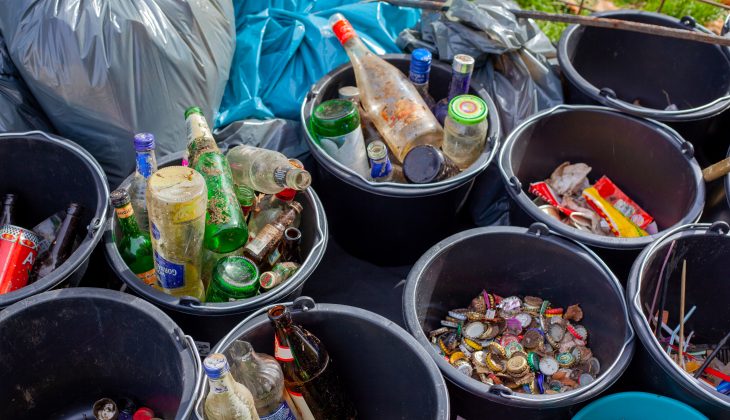Did you know that every person in Estonia produces around 400 kilos of waste a year? This is a big number, so the ecological footprint we leave on the planet should be carefully monitored. Youth information portal Teeviit shares information on waste sorting – read about it!
One good deed for the environment is definitely waste sorting, as it makes it possible to produce new things from waste, i.e. to re-use materials. Collecting and returning glass waste has become a standard over the years; the same could be done with other waste that we produce every day through our activities and consumption, such as packaging, bio-waste and used paper.
Most cities and parishes, as well as villages and smaller localities, have containers where you can deposit sorted waste. Sorting waste has several advantages. First, it reduces waste bills (there is no need to order waste collection so often!), but it also contributes to a cleaner environment because sorted waste can be reused and recycled. If you are unable to separate all your rubbish, start with one thing at a time – still a great way to help the environment! First, choose one or two waste categories that you find easiest to separate.
Waste can be sorted into 5 different categories – bio-waste, cardboard and paper, metal and plastic (including packaging), glass and household waste:
- Bio-waste includes leftover food, egg cartons, cut flowers and paper towels, but excludes tree leaves and grass and plastic bags. Bio-waste can be put in a separate bin or made into compost.
- Cardboard and paper containers may be used for newspapers and printer paper, books and magazines, cardboard boxes and other paper packaging, but coffee cups and paper plates (unless labelled as such) do not belong there.
- Plastic bottles, tetra packs, yoghurt tubs, tin cans and lids, and plastic bags can be placed in metal and plastic containers or packaging or mixed containers; polystyrene dishware and dirty packaging, however, are not suitable.
- Glass includes glass bottles and jars, but not glass tableware or glass from windows.
- All other rubbish can be put in household waste, except medicines and hazardous waste which must be disposed of separately. Medicines are collected at pharmacies and hazardous waste can be taken to a waste station. Many shops accept old batteries.
The most important rule of sorting waste! When it comes to sorting waste, the best results are achieved if it is clean and sorted as soon as you have it. It is almost impossible to separate waste later. This is why it is important to separate different types of waste already at home or at the workplace, so that most of it can be sent for recycling – and the contribution to the environment is greater.
Facts about waste:
- On average, every Estonian generates 400 kg of household waste per year.
- The average European generates around 500 kg of household waste.
- Estonia’s average total waste per citizen is 13 tonnes per year, of which 60% is hazardous waste (due to the oil shale-based energy industry).
- Europe’s average total waste per citizen is 3.5 tonnes per year, of which hazardous waste accounts for 3%.
- 20% of the Estonian population (nearly 270,000 inhabitants) do not have a waste collection contract with a waste carrier.
- 10% of the Estonian population (nearly 135,000 inhabitants) regularly incinerate waste.
The article was prepared by the youth information portal Teeviit using sources from Ragnsells and Võtavabalt.
Published in the youth information portal Teeviit in 2022.
